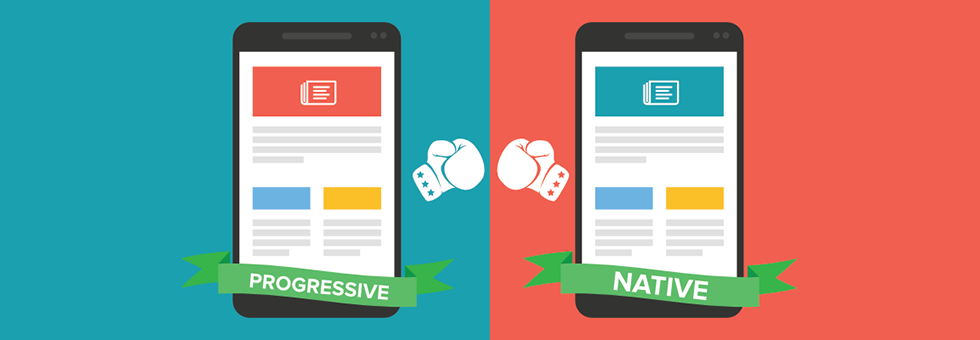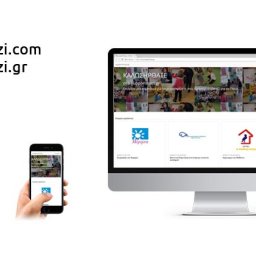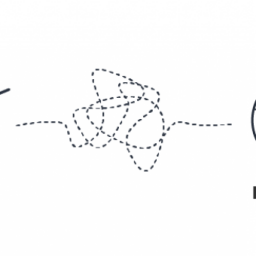
Is PWA the future of mobile apps?
Since they were first proposed in 2015 by Google, progressive web apps (PWA) drew immediate attention as an alternative to mobile apps. Today, the technology is competing with mobile apps to determine the path of future mobile device applications – PWA or traditional mobile applications?
Making the development choice between a PWA or traditional mobile app can be complex, and requires an understanding of the positives and negatives of both options.
At NemoLogix, we recently completed the implementation of a PWA for one of our customers. During the project, we gained significant experience and drew some conclusions around the best applications of PWA. The below blog post highlights our experiences.
What are Progressive Web Apps (PWΑ)?
Simply put, a Progressive Web App is a mobile app delivered through the web. It functions just like a native app, due to the use of an app shell that is saved on the home screen of the phone. This app isn’t installed through an app store but from the PWA website. The user adds the app on the phone’s home screen. In this way, the website benefits from the impulse behavior of the visitor.
PWA, just like native mobile apps, are categorized according to the services they provide to users. For simplicity, we categorize the following types of PWAs:
- Content-based apps
- Social Media Apps
- E-commerce apps
- IoT apps
For the first three types, the most important functions are the speed at which content updates. For these types of functions, the benefits deriving from the use of PWA are self-evident.
Based on data presented by Twitter, Tinder, Starbucks, and Pinterest, users spend more time on the corresponding website when visited through a PWA. Accordingly, Alibaba.com announced improved sales results after the implementing a PWA. These trends make a clear case for the benefits of PWA to sales. But what about the case of native apps interconnected with other devices, such as fitness apps? Or interconnected apps through smart devices in general?
In these cases, there is a requirement for secure local connections via Bluetooth or Wi-Fi, along with usage optimization of both the mobile and smart devices’ hardware. These requirements create a different use case and expose current limitations with PWA such as a reduction in the speed of intercommunication between apps. For these are no longer local connections but they are served through the cloud hosting the PWA.
Our research has not revealed an implementation of PWA with established interconnectivity among smart devices. As the speed of internet connections continue to rise, PWA implemented apps will spring out in this category as well. It seems quite certain though that PWA will not completely replace native mobile apps, which constitute a firm contact point near smart devices, as they offer security and stability in data transfer – a feature too important to be neglected in most IoT apps.
A Real-World PWA Example:
Design philosophy
Our design strategy took advantage of the attractive features of the customer’s desktop website, focusing on offering visitors the most out of the information and services available. We implemented a comprehensive, extended menu, taking into account the accepted S.E.O. rules and strategies that would maximize the PWA’s place in the organic results of search engines, something that is easier to implement with the use of PWA technology. At the same time, the menu serves as an easy to use and functional portal to the majority of services offered to users, thus facilitating website navigation.
Efficiency Benefits
The design and implementation of the PWA were measurably shorter than the time to develop a comparable native mobile app. In addition, because PWA updates can be implemented directly in the cloud versus updating an app store, release time and resources can be focused on improvements additions and optimizations to the progressive web apps.
Let the data speak
In the first month after the launch of the PWA, pages per visit have jumped up over 55% along with average time spent on the website, which increased by 60%. The bounce rate dropped by 52% for visits made by mobile devices (phones and tablets alike). In addition, the company witnessed an increase in visits, particularly with new visitors from mobile phones. This is due in part to the improved S.E.O. strategy implemented by the company, along with the launch of the PWA.
Overall, our experience with PWA development was a positive one. Our customer, like the industry leaders mentioned above, have seen quantifiable results in user engagement. Based on this, we can comfortably say that, in the areas of content presentation and content services, a PWA can successfully address the need for a Mobile Website and a generic native mobile app.
Progressive Web Apps are here to stay
In the last couple of years, almost all major brands have moved to develop and operate in parallel to their native mobile apps and PWA editions thereof. Just taking into account this development, it is unambiguous that PWA is here stay! In addition, our customer’s experience and the visitor analytics data from mobile devices, which show a steep, upward trend in all major usability indicators compared to the previous mobile version and native mobile app are compelling. PWA will allow brands and services to develop apps of higher speed, enhanced engagement with users and access that is more reliable to all web pages from any device.
Progressive web apps have room for improvement. Specifically, PWA needs to include more advanced technologies on hardware and network management in order to be reliable in all cases that native mobile apps cover today. But I personally believe that innovation is coming soon.
Are you wondering if Progressive web apps are the right choice for your brand? Have you decided to develop a PWA for your service, your website or your e-shop?
At nemologix.com we will help you build a solid, effective and tailor-made PWA that suits your needs!
Contact us at NemoLogix to learn more about PWA development.








